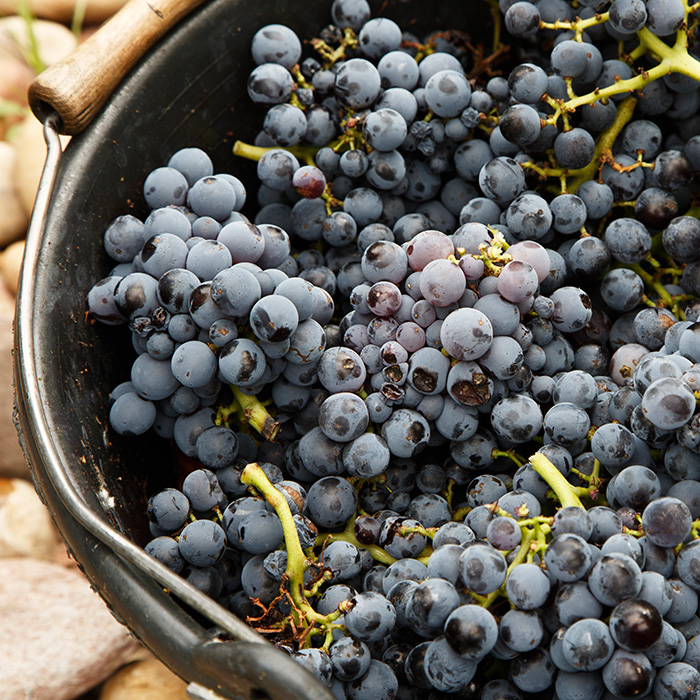Pineau d’Aunis: the original Claret?
Author: Simon Field MW

Photograph: Jason Lowe
Whimsy is essential in the wine trade, made possible because – behind the facts, the figures, the geology and the hard science – there is something more, something which may not (for all but the most deluded souls) be immediately identified in the more strictly Cartesian disciplines to which the majority of our graduates, mainly with good reason, gravitate. What is this additional magic – beneath and beyond the far from Cartesian impulses of the pleasure principle itself – where the alchemy of alcohol itself transforms and embellishes perception, so much that it has been (by whom I know not) described as a “drug”? Or as the key symbol of the Christian religion – or both?
Enough whimsy: we are here to discuss Pineau d’Aunis, one of those marvellous “discovery” grapes, which, inevitably, with but the most cursory enquiry, opens vistas of enlightenment. (See, we have moved from Descartes to The Enlightenment in one paragraph…) The wine in question is the red-breasted Rouge Gorge from Domaine Bellivière who are based in Jasnières, just to the north of the grand ciy of Tours in the Loire Valley. Christine and Eric Nicolas farm in accordance with biodynamic principles and have dug a very photographic winery into the tuffeau, as the local chalk/limestone terroir is known. The Jasnières appellation is only for their (superb) white, so this red resides in the Coteaux du Loir AOC.
Researching Pineau d’Aunis is most entertaining, as the whimsy merchants have been out in force. It is and then it isn’t related to Pinot Noir, ditto Chenin Blanc, and there may, or may not, be a distant genealogical link to Arbois. Today, it seems, there are 450 hectares planted (not much!) mainly in Anjou and Touraine, but way back when there was, oh so much more, no need to quantify an unknown. A known unknown. The hypothesis is best supported by anecdote; the prevalence of the Pineau de Charentes further south supports the theory, albeit somewhat tangentially, that Pineau d’Aunis was one of the key grapes of the late Medieval period, when most of western France was part of England.
Henry III, it seems, imported it to England in 1246 and it was this wine – no doubt beefed up by teinturier, but fundamentally light of hue – which was described as “Claret”. So, another addition to the origins of Claret story – no more or less probable than many of the others. And then the salt merchants who combed the Atlantic coast imported, for whatever reason, the variety to the Loire, where it has flourished ever since. (Well, maybe not “flourished” in its broadest sense.)
Why all the preamble? Well, dear reader, it’s because the wine is outstanding, outstandingly different and in all probability worth more than Robert Parker’s early description – “invigoratingly tart”. Let’s buy the invigorating and leave the tart to its own devices. The key flavours are informed by cherry, kirsch, raspberry, griotte, Morello (insert other synonyms here) and, most importantly, a peppery backdrop – with white and black pepper, which is unique.
When I think of black pepper, I think of Gonon St Joseph; when I think of white pepper, it’s Achleiten from Prager in the Wachau; when I think “both” peppers it has to be Pineau d’Aunis. It’s amazingly different to Cabernet Franc, which I also love, and far more interesting than Gamay. It is temperamental, of course – susceptible to chlorosis and botrytis especially. If there is too much limestone in the soil, it ripens too early; too much clay, then it ripens too late. Yes, one of those grape varieties – hence its rarity. But it’s well worth the effort, whimsy aside, and has the best possible ambassador in M Nicolas at Bellivière.
An ancient varietal, Pineau d’Aunis is fantastically hard to get right. The nose is intriguing –layered with bright, juicy fruit, but also a heavy and attractive dose of pepper spice. The palate is moreish, its vibrant acidity balanced by pure and lush fruit – raspberry, cherry and a touch of redcurrant (the makings of summer pudding, perhaps?). But there is also a reassuring grip to the palate, a touch of tannin that will ensure this sits happily alongside a plate of charcuterie.
Find out more about our Wine Club (including how you can get a free magnum of our Grand Cru Champagne) on bbr.com.



[…] a recent blog piece, my learned colleague Simon Field MW wrote that Pinot d’Aunis is “far more interesting than […]
[…] recent history, e.g., Cabernet Sauvignon was not widely cultivated there until the 1600s. One fascinating speculation is that the unique and today somewhat marginal Pineau d’Aunis grape, now relegated to the small […]